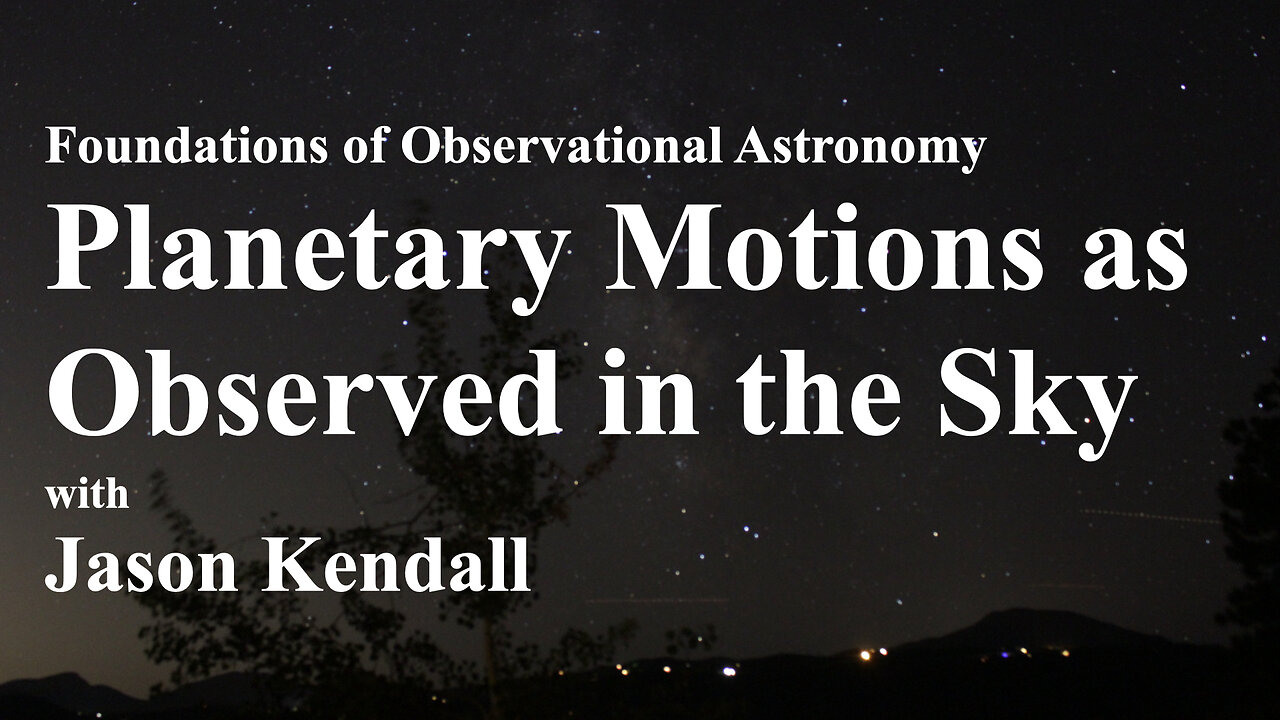Premium Only Content

The Intriguing Dance of Planets: Exploring Planetary Motions in May 2044
In this session, I shall explore the motions of planets as observed from Earth. Utilizing a simulation that projects into May 2044, I will illustrate the movement of Mars across the night sky. Observers will witness how Mars alters its position relative to the background stars over time, providing a captivating view of celestial dynamics. A key feature we will examine is retrograde motion, during which Mars appears to move westward against the backdrop of stars. This optical illusion occurs because Earth, which orbits closer to the Sun and travels at a faster pace, overtakes Mars in its orbit. As we “lap” Mars, it creates the perception of the planet moving in reverse. Notably, this phenomenon is not unique to Mars; Mercury and other planets exhibit similar behavior. Mercury’s retrograde motion, for instance, occurs when it is at inferior conjunction, positioned between Earth and the Sun. Due to its proximity to the Sun, observing Mercury can be challenging without appropriate timing. In the simulation, viewers will observe the equatorial grid, the paths of planets (both prograde and retrograde), and the appearance of planetary orbits in the sky. The red line depicted in the simulation represents Mercury’s orbit, serving as a reminder that planets traverse elliptical, rather than perfectly circular, paths. Kepler’s laws elucidate these motions, stating that planets located closer to the Sun move at greater speeds, while those situated farther away move more slowly. This summary of orbital dynamics clarifies that retrograde motion is an observational effect resulting from the relative speeds and positions of Earth and other planets within their orbits around the Sun. Additionally, viewers will notice the Sun’s ecliptic path, which represents Earth’s orbit projected onto the celestial sphere, alongside the right ascension and declination grids for reference. By enhancing our understanding of these movements, we can appreciate the intricate dance of planets and gain valuable insights into the mechanics of our solar system.
-
 LIVE
LIVE
The Shannon Joy Show
2 hours ago🔥🔥TACO Trump Rug Pulls AGAIN - Deploying His Fascist Police State In Red States NOT Blue.🔥🔥
220 watching -
 LIVE
LIVE
Grant Stinchfield
1 hour agoBig Pharma’s Dirty Secret: It Writes the Medical School Curriculum
92 watching -
 1:10:58
1:10:58
vivafrei
3 hours agoBanning the Burning of the Flag? Raja Jackson Assault & Some Insanely Stupid Takes! NYC Chems & MORE
29.1K25 -
 LIVE
LIVE
LFA TV
6 hours agoLFA TV ALL DAY STREAM - TUESDAY 8/26/25
4,870 watching -
 27:39
27:39
Crypto.com
3 hours ago2025 Live AMA with Kris Marszalek, Co-Founder & CEO of Crypto.com
39.7K3 -
 LIVE
LIVE
Trumpet Daily
58 minutes agoTrumpet Daily LIVE | Aug. 26, 2025
385 watching -
 34:31
34:31
Rethinking the Dollar
1 hour agoTrump Targeting FOMC Board To Reassure Rate Cut | Morning Check-In: Let's Talk...
10.9K -
 1:21:20
1:21:20
The Big Mig™
4 hours agoViolence & Burning The U.S. Flag, Democrats New Battle Cry
44.7K10 -
 DVR
DVR
The State of Freedom
3 hours ago $0.33 earned#327 Digging Deeper into the Carbon Capture Scam w/ Brad LeBlanc
15K -
 38:39
38:39
VINCE
4 hours agoThis Is How The Media Spins The News | Episode 111 - 08/26/25
137K75